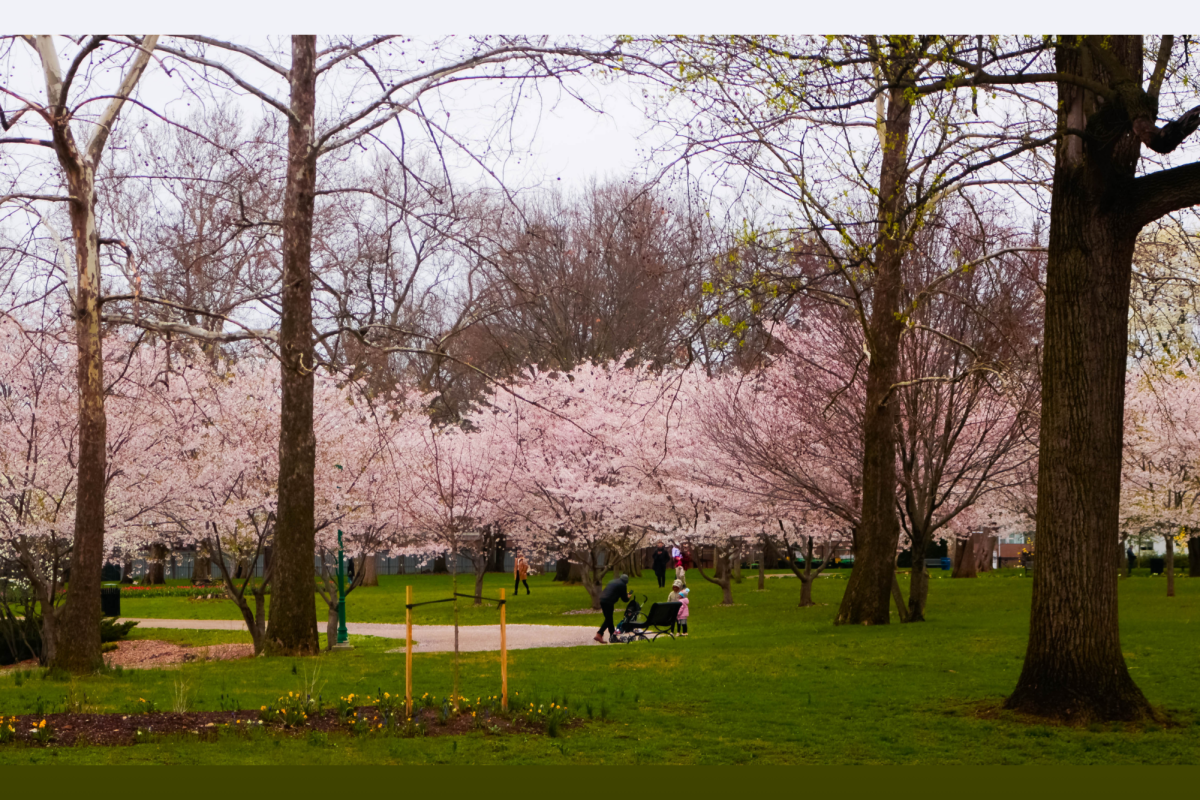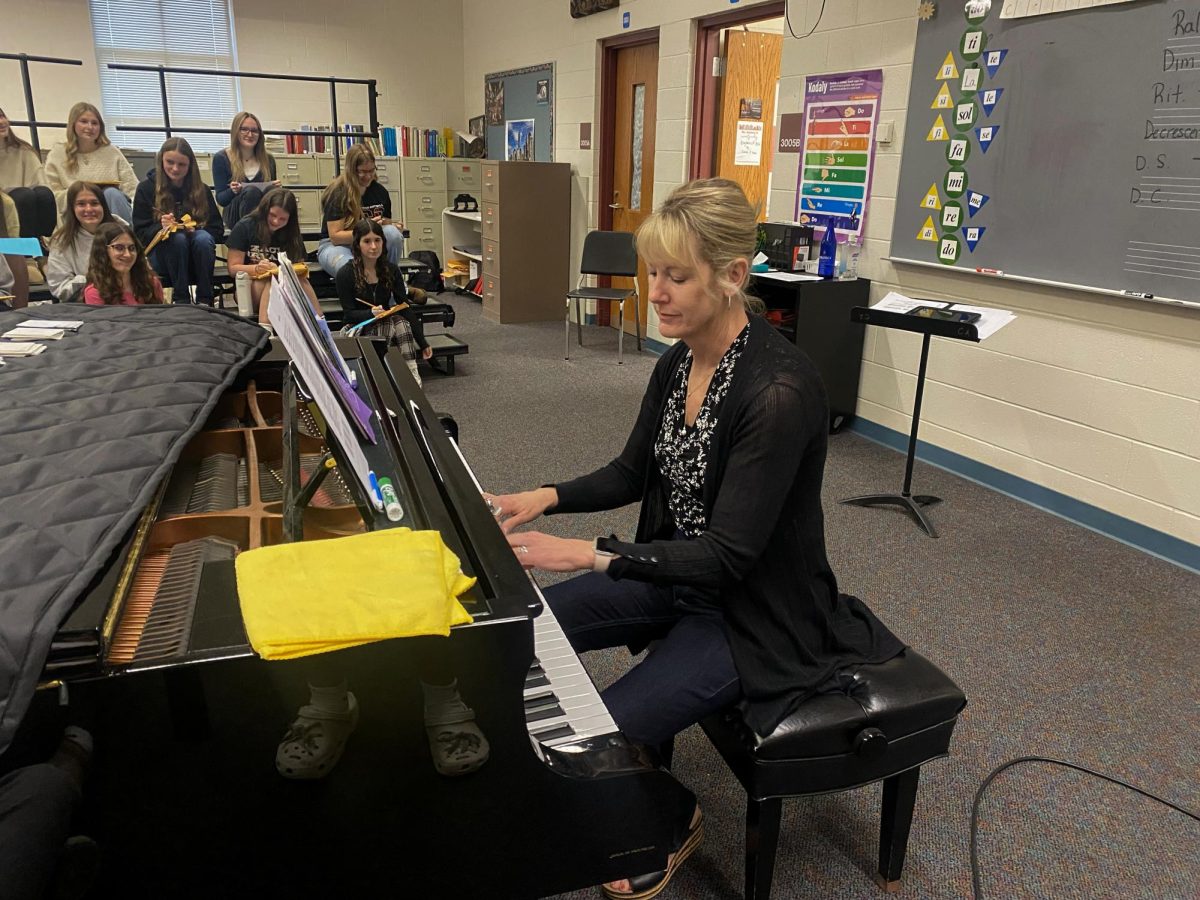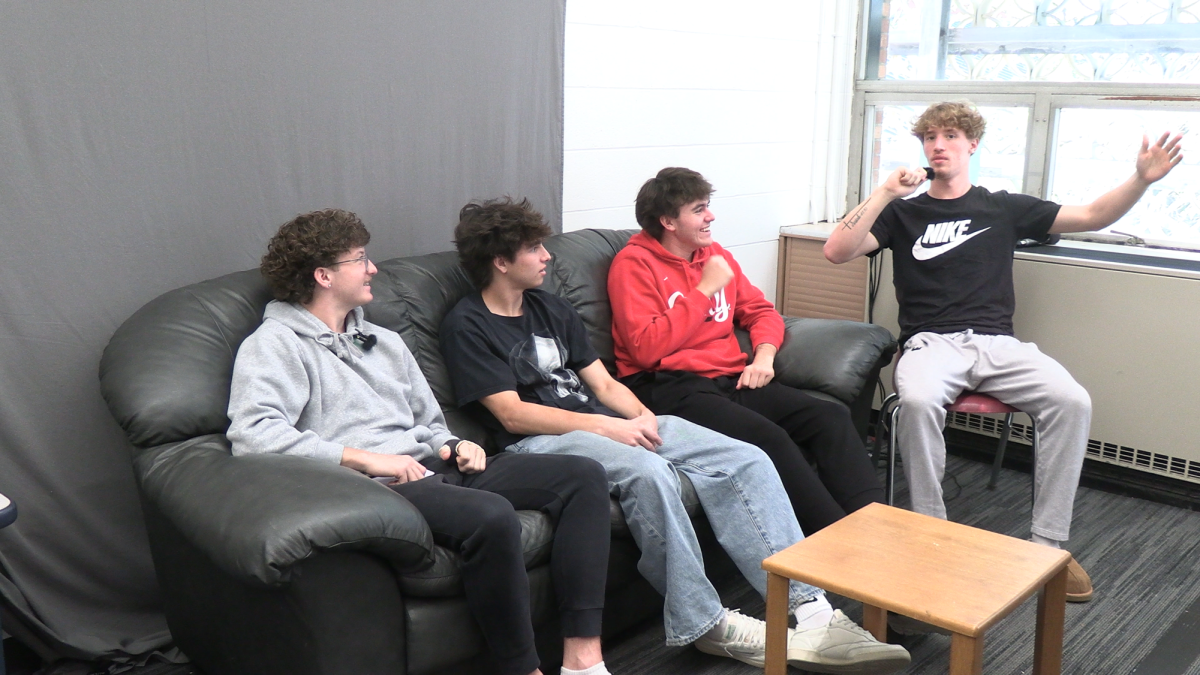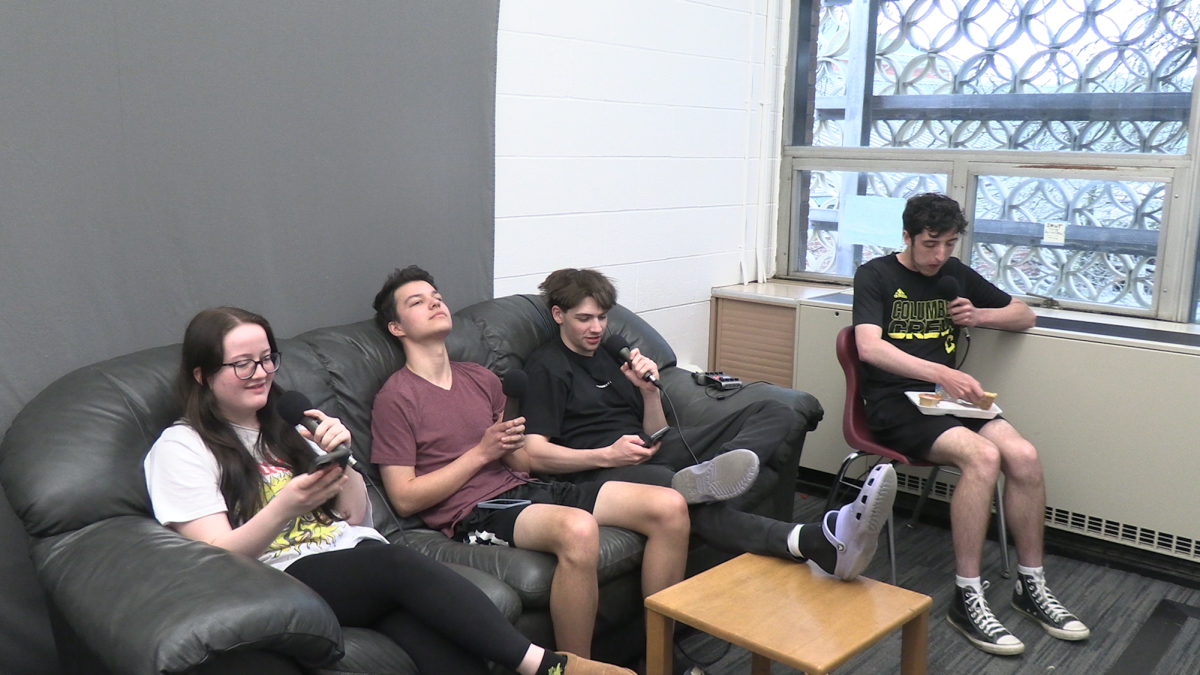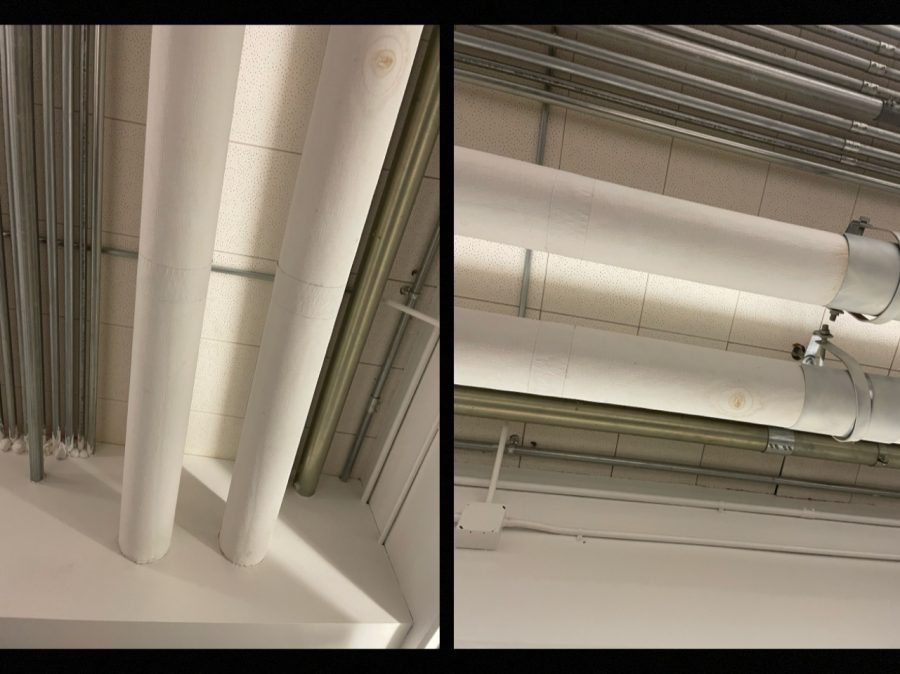DCS officials work to rectify summer mold growth
Hayes High School’s most recent renovations, intended to decrease the presence of mold throughout the building, included the retooling of water pipes with new insulative material.
February 3, 2023
Over the 2022-2023 winter break, Delaware City Schools officials renovated piping, ceiling tiles and other infrastructure at Hayes High School that were found to be contaminated with mold.
For many like Spanish teacher Meghan Kollas, who teaches in Hayes’ older wing where the mold was most prevalent, this change could not come soon enough.
“We hoped that it would have been taken care of last school year as opposed to the school year when it was first brought to [school officials’] attention as a major issue,” Kollas said.
The mold formed due to condensation on the water pipes running through many of the classrooms in the old wing, which mixed with the summer humidity to provide for an ideal growth environment.
“It took us a while to figure out that it was the new chiller that we installed a couple of years ago,” said Delaware City Schools facilities director Jason Sherman. “The cold water that’s pumped through is much cooler than it ever was before, and in the summertime when the air conditioning is cut back, it’s warm and humid and dark. It’s just like the condensation on your soda in the summertime. That condensation was seeping through the pipe insulation and mixing with the dirt that was there.”
The mold wasn’t growing in quantities that were particularly harmful, yet may have posed an issue for those with seasonal allergies or conditions that affect breathing if allowed to grow for an extended period of time.
In addition, the growths didn’t have to be outwardly harmful to visibly stain the installations that they spread to. This caused concern among both students and staff, as many were weary of the black sludge that permeated their classrooms.
“I actually noticed [the mold] before we moved into the new [part of the] building, so prior to 2017 in my previous room, some of the pipes were looking very questionable, and I was told that it was just dust or dirt,” Kollas said. “It was what we were also told last fall as we started school. So we came back and it was very, very obvious that it was completely covered and all the pipes were completely covered in several of our rooms.”
The status of the mold was not confirmed by maintenance staff until a survey of the building was conducted.
Until then, old wing teachers turned to Hayes biology teacher Amanda Johnson to test the black substance and uncover its mystery.
“[I have a] Bachelor’s degree in microbiology, so I had a teacher approach me and say, hey, could you just come take a look at this and see what you think [because] we hear that you have the ability to take samples and grow things,” Johnson said. “In my class, I would have the students take media plates out into the school and they would choose a couple locations; drinking fountains or doorknobs, things like that, and they would swab those surfaces and then streak them on plates, and then we would put them in my incubator and see what would grow.”
To Johnson, the result of the experiment appeared to be consistent with what she recognized as mold. These samples were then presented to administrators as evidence of the mold growth. Although the work was eventually completed, it was an arduous process for maintenance officials to begin renovations.
“A lot of people will look at a process and think that it takes too long because we have to schedule the work around school activities,” Sherman said. “We need to find the proper vendor and allocate the money necessary to address the problem and those are all issues that can take some time to resolve. Especially nowadays with the supply chain and the shortage of labor and materials. It gets harder and harder to find trained professionals to come into the district and perform specialized work.”
The renovations may have been a long time coming, but many are glad that their classrooms are finally safe and mold free.
“It would be really nice if everybody could just snap their fingers and say, ‘that’s a problem. Take care of it,’” Kollas said. “But we just don’t know the whole story, so we’re happy that it got taken care of. It’s a 60-year-old building, so we have things that are falling apart, faster than we can keep up.”
















